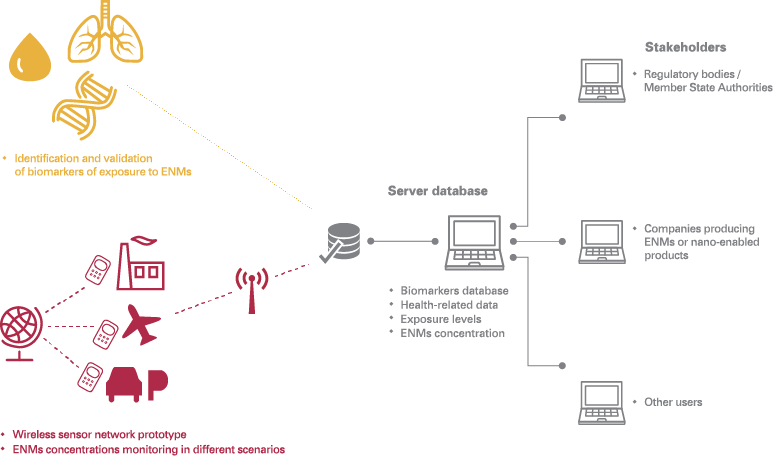The NanoExplore project has successfully ended! The Final Project Report is ready for your download. It covers the project activities from...
There is an urgent need to provide stakeholders, including regulatory bodies and companies, with an integrated approach to generate robust data on the levels of exposure and related health effects, supporting the risk assessment.
The Life NanoExplore project is working to develop and demonstrate the feasibility of an integrated approach to conduct biomonitoring studies, characterise exposure levels and elucidate possible health effects deriving from exposure to engineered nanomaterials (ENM) in indoor workplaces and urban areas.
NanoExplore promotes a harmonized approach to overcome current data gaps and barriers limiting the implementation of the REACH regulation and the use of human bio-monitoring data in the protection of human health and the environment when dealing with particles in the nanometer range (1-100 nm) by combining long series of robust data on the concentration of ENMs measured by a wireless sensor network (WSN) of monitoring devices, appropriate biomarkers, and a tailored designed data management application. This approach addresses current environmental, health, and safety questions about ENMs, providing stakeholders from government, industry, NGOs, or the general public, with reliable data on the concentration and effects of particles in the nanometer range (1-100 nm).
- NanoExplore will generate a panel of recommended biomarkers to support a harmonized health surveillance in the near future
- A major challenge within NanoExplore will be the definition of a robust monitoring system able to monitor relevant parameters, discriminate background levels, and identify operations modifying the exposure.
- The NanoExplore approach will be implemented in case studies from the Valencia community. Companies producing and/or using ENMs will be contacted to define a proper implementation plan.
- NanoExplore will generate new data on the particle concentration collected from the particle breathing zone (PBZ), supporting health surveillance)

Objectives and Results
The overall aim of the NanoExplore project is to develop and demonstrate the feasibility of an integrated approach to conduct biomonitoring studies, characterize exposure levels and elucidate possible health effects deriving from exposure to engineered nanomaterials (ENM) in indoor workplaces and urban areas.
Project objectives:
- To develop a wireless sensor network of low-cost, portable and battery-powered devices that cooperatively monitor the concentration of ENMs and relevant physical environmental conditions in indoor workplaces and urban areas.
- To develop a web-based data management tool aimed at supporting health surveillance and the acquisition, management and processing of data on the concentration of ENMs
- To define and validate a panel of candidate biomarkers of nanomaterial exposure and effects via inhalation.
- To carry out a risk analysis of possible effects on human health deriving from exposure to ENMs in 5 case studies.
- To refine currently available Recommended Exposure Limits (REL) for metal oxides and low soluble carbon based materials.
- To validate and demonstrate the feasibility of the NanoExplore approach for the risk assessment of ENMs in Europe by implementing a pilot study in 4 European countries.

